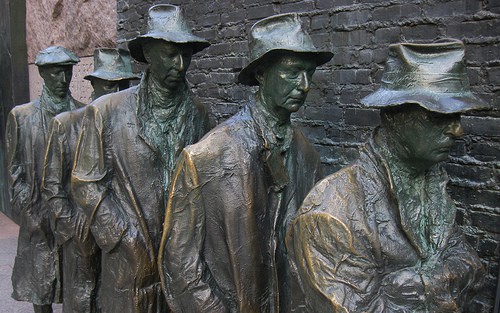The holidays – time for peace on earth and goodwill to all people, warm fireplaces and mugs of cocoa – enough of that. Back to the real world. Especially for the poor and unemployed.
Because, as you may have heard, emergency unemployment insurance authorization has run out. The Washington Post’s Brad Plummer, on the“Wonkblog”, featured a comprehensive breakdown of just what is going on here, as well as the important facts of this crisis. As of December 28, there is a strict limit of 26 weeks to collect unemployment. In some states, this already low bar may be set even lower. Nearly 1.3 million people have lost their benefits as of the end of December, and almost 4.9 million will lose them by the end of 2014. Earlier this week, the Senate overcame a filibuster – just barely – to begin debate on a bill to temporarily extend these benefits. It is unclear if it will even pass the Senate, and is likely to be ignored by a Republican-controlled House. Unfortunately, the issue of assistance to the long-term unemployed has become political theater, a way to score points, rather than a policy calculated to help those in need.
Now, unemployment was never meant to be a permanent handout. It was designed to aid people who lose their job while they transition to a new job. Yet, as The Economist notes, long-term unemployment is a new reality — a “dark shadow” — that few policy makers have been ready to acknowledge. The Center on Budget and Policy Priorities notes that the United States is still facing a jobs emergency. And, as Jason Linkins notes, there are significant worries regarding what this means for the American economy. A transformation is going on in the labor pool, one that treating the long-term unemployed in the same fashion simply does not address.
Moreover, as Evan Soltas discovered, cutting unemployment insurance is not a good way to spur greater employment. Take the example of North Carolina. That state cut its unemployment insurance severely last year, even before the current cuts were mandated, and the result was not more jobs or higher employment:
North Carolina’s labor force began to shrink. The state is experiencing the largest labor-force contraction it’s ever seen — 77,000 fewer people were working or searching for work this October than a year ago. This should, but won’t, settle a partisan debate. Cutting unemployment insurance apparently hasn’t encouraged the unemployed to look harder for work: It has caused them to drop out of the labor force altogether.
The burden to support them, then, falls to private charities, food pantries, and what Soltas terms the “safety net of the safety net.” Already strained networks are strained past the breaking point.
Reasonable minds may disagree on the best way to address questions of economic and social inequality. There are multiple ways to address the problems facing the long-term unemployed. And those might involve reforming or reworking the unemployment insurance. However, doing that requires something comprehensive. To simply allow millions to lose the only source of income they might have while they try to find a new job, to simply allow them to slide even further down the ladder, without anything else – well, that is just cruel.



